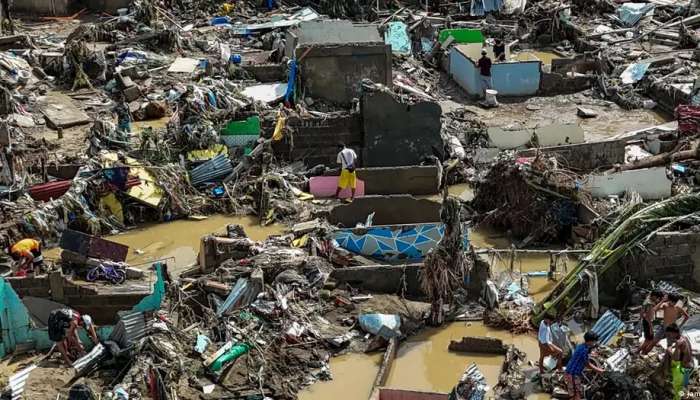
Manila: The Philippines is in for more extreme weather as a major storm moves toward the country's eastern coast.
The island nation is still reeling from Typhoon Kalmaegi, which devastated large swathes of the country this week.
The new storm, Typhoon Fung-wong, is expected to turn into a super typhoon before it makes landfall on Sunday night or early Monday morning, with the Philippines' weather bureau warning of storm surges of up to five metres (16 feet).
The official death toll from Typhoon Kalmaegi in the Philippines has meanwhile risen to at least 204, officials say.
Kalmaegi went on to kill at least five more people in central Vietnam after the storm pounded the country with torrential rain and high winds on Friday.
The storm had weakened to a tropical depression by Friday morning and moved into neighboring Laos and Cambodia.
Evacuation orders as Typhoon Fung-wong nears
Fung-wong, currently carrying maximum sustained winds of 140 kph (87 mph) and gusts of up to 170 kph, has already brought heavy rains and winds to parts of the eastern Philippines.
The typhoon spans 1,500 kilometres (932 miles), meaning that it could also affect the densely populated area in and around the capital, Manila.
Residents in low-lying and coastal areas have been ordered to evacuate to higher ground and to halt all activities at sea.
Ongoing cleanup in the Philippines
Meanwhile, cleanup and rescue operations are continuing in the center of the Philippines, where Kalmaegi made landfall on Tuesday.
In addition to the more than 200 fatalities, nearly 450,000 people were evacuated to shelters, and nearly 400,000 remained in evacuation centres or homes of relatives as of Saturday.
President Ferdinand Marcos Jr. on Friday visited the worst-affected areas in the central Cebu province, where 141 people died, mostly in flooding.
The Philippines is hit by around 20 tropical cyclones each year. More than 6,300 people died when Super Typhoon Haiyan hit the country in November 2013.
What is the extent of the damage in Vietnam?
In Vietnam, the storm uprooted trees and downed power lines, leaving some 500,000 people without power as of Saturday. It also caused dozens of homes to collapse and severely damaged or blew the roofs off more than 2,600 others.
Vietnamese authorities have warned of continued torrential rains, with forecasts of up to 200 millimeters (8 inches) in the center of the country, where rising river levels have also triggered warnings of landslides and floods.
Before Kalmaegi's arrival, Vietnam was still recovering from days of record-breaking amounts of rain that caused flash floods.
Climate scientists have warned that such extreme weather events are increasing in frequency and intensity as the Earth's atmosphere warms, largely because of human use of fossil fuels.